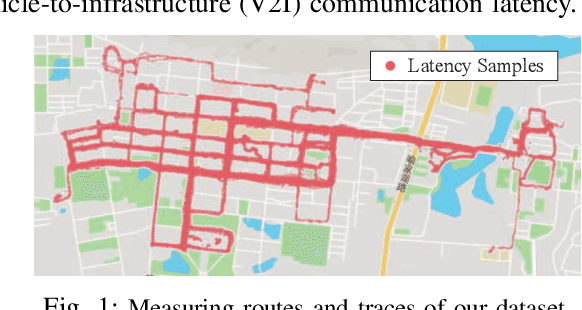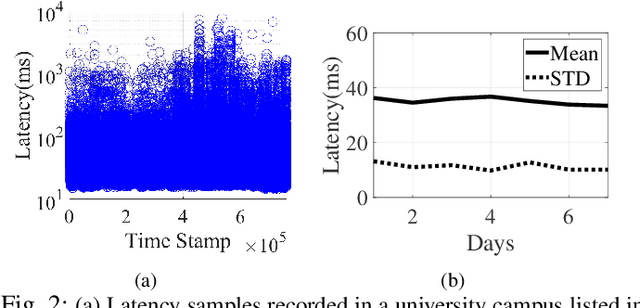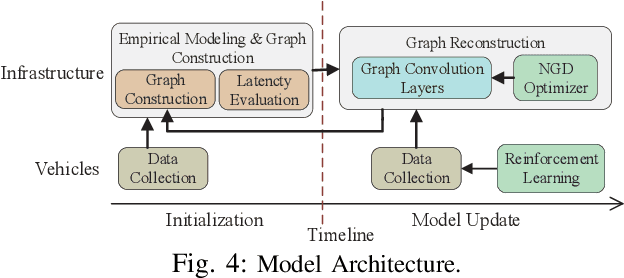Spatio-temporal Modeling for Large-scale Vehicular Networks Using Graph Convolutional Networks
Paper and Code
Mar 13, 2021



The effective deployment of connected vehicular networks is contingent upon maintaining a desired performance across spatial and temporal domains. In this paper, a graph-based framework, called SMART, is proposed to model and keep track of the spatial and temporal statistics of vehicle-to-infrastructure (V2I) communication latency across a large geographical area. SMART first formulates the spatio-temporal performance of a vehicular network as a graph in which each vertex corresponds to a subregion consisting of a set of neighboring location points with similar statistical features of V2I latency and each edge represents the spatio-correlation between latency statistics of two connected vertices. Motivated by the observation that the complete temporal and spatial latency performance of a vehicular network can be reconstructed from a limited number of vertices and edge relations, we develop a graph reconstruction-based approach using a graph convolutional network integrated with a deep Q-networks algorithm in order to capture the spatial and temporal statistic of feature map pf latency performance for a large-scale vehicular network. Extensive simulations have been conducted based on a five-month latency measurement study on a commercial LTE network. Our results show that the proposed method can significantly improve both the accuracy and efficiency for modeling and reconstructing the latency performance of large vehicular networks.
 Add to Chrome
Add to Chrome Add to Firefox
Add to Firefox Add to Edge
Add to Edge